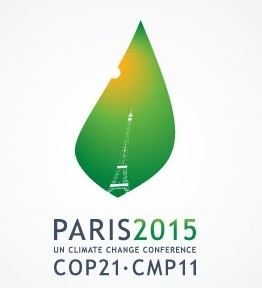-
The United Nations Climate Change Conference – Paris 2015
 Continue Reading
Continue ReadingWhen the Kyoto Protocol came into force in 2005, it was felt that a new dawn had begun, not because the rest of the world realised it could act without American support, but because it saw the birth of carbon emissions trading. For the first time ever, nations agreed to reduce greenhouse gas production, and agreed on a number of 5.2% in the years 2008 – 2012.
As a whole, this target was met, if only due to the financial crisis and subsequent slowing down of the world economy. However it is less clear if individuals like China, who saw massive growth, managed to maintain a grip on their coal burning, or even if the EU was able to stay within their limits.
Still, the global impact of Kyoto was huge, if nothing else but for the sense of a planet acting as an (almost) whole to tackle a planetary problem. A spirit of unity that it is hoped will still be felt at the next round of talks in Paris, at the UN Climate Change conference due in December 2015. Which, as it is the 21st conference of its kind, environmentalists would like to see the negotiations come of age, and secure a legally binding commitment to limit global temperature rise to 2°C.
Optimists hope that this commitment will accelerate the introduction of advanced technologies and facilitate the exchange of information between regions industrial sectors. Pessimists point to the fact that during preliminary talks in Marseilles earlier in June of this year, countries declared their processes for reduction of greenhouse gases but without being clear whether or not those steps were sufficient to limit the global temperature rise to the required 2°C.
Realists hope that the summit will allow for the implementation of Proportional Carbon Pricing. This newer system is a development of emissions trading that takes into consideration areas with lower industrial activity. Also possible is the summit’s ability to find mechanisms for reducing energy consumption and a gradual switching towards renewable energy and energy efficient storage. Although this is mainly a question of optimal investment in technology and pilot projects, to allow a rapid decrease in development costs.
Ultimately, the question of which direction emissions trading or carbon pricing takes it still unanswered. Whether it is adapted on a mutually agreeable platform, enforced on smaller, developing regions by political and economic powerhouses or abandoned altogether is yet to be known.
-
How to get Investors to Move into Chemicals
 Continue Reading
Continue ReadingDuring a recent study by the renowned business analysts at Rolandberger, it was found that companies in the chemicals industry represented some of the best investment opportunities. The study concluded that investors in this field received higher than average rates of return and saw capital growth that on average beat all other sectors.
Of course, not all chemical companies are profitable, and not all are worthy of investment. But the study showed that all types of businesses (speciality chemicals, commodity based firms and traders) in the chemical industry outperformed the rest in terms of growth and profits. So what is it that makes some profitable and worthy of investment and others not? How can you make your business attractive to potential fresh money?
There are four main areas of focus:
Leadership
If your business is like most, then 80% of your revenue come from a core of your products or services. Businesses with good leadership have a full understanding of that core. It is their strength and its success or failure will determine the success or failure of your company.
Your business model must be centred on that core business and the company leaders must fully understand that centre of operations.
If you are lucky, then your firm is large and has sufficient market share of your core business to define price-setting mechanisms and influence trends. Examples of this command of the market include Monsanto, 3M and Ecolab.
Future Strategy
A successful business must know what its business model is, where it is today and where it wants to be tomorrow. It must also have a defined strategy of how to get from today’s position to tomorrow’s.
Preferably, the business will include different yet complementing revenue streams. These streams flow from products and services that work together to provide a cognitive whole.
Risk Strategy
Potential investors must clearly be able to see the gains to be made from investing money in your business. Similarly, the risks must also be openly given, so that everyone is aware of the risk-reward proposition.
Execution
To execute your business model, your company must effectively communicate its offers to customers and its strategy to investors.
It must also maintain high standards of processes, and must have systems in place to allow business leaders to focus on the key business functions.
Conclusion
Now that the chemicals industry is seeing growth in many sectors, and has finally returned to a positive position after the shocks of 2008, investors have wised up to the fact that the industry is a good place to put money. Commodity values are rising on Wall Street and the larger firms, such as Dow, are posting bumper profits.
Furthermore, a recent American Chemistry Council report states that gross exports for chemical products will blossom from $60 billion in 2014 to $123 billion by 2030. So the smart money is looking to invest in companies like yours.
By following investment friendly strategies like those above, you may well be able to expand just as the market for your products is entering the golden years.
-
Nanotechnology & Polymers: How do large molecules impact small-scale science?
 Continue Reading
Continue ReadingNanoscience is a growing field which is a subset of major scientific fields such as chemistry, physics, engineering, biology, and environmental science with a particular focus on the nanometer length scale. Polymers are typically large molecules—not nano in size. One might hear these two descriptions and immediately jump to the conclusion that there is no place for polymers within nanotechnology, and conversely, that there is no place for nanoparticles within polymer science. That is a false conclusion! These big molecules have already made small scale science more powerful, efficient, and innovative—and are poised to continue to do so as future technology is developed combining polymers and nanomaterials.
In-Use Applications
For many the words “nanoscience” and “nanotechnology” bring associations of technology that is highly futuristic and out of reach. However, there are many applications of nano materials within polymer science that happen each and every day.
Nanomaterials are currently added to polymers for a variety of reasons and within a variety of applications. For example, silver nanoparticles can be added to polymers in order to provide antimicrobial properties, as silver inhibits bacterial growth. Other applications of nanoparticles include reinforcing translucent or transparent polymers to increase the physical strength with minimal loss of clarity. Nanoparticles are smaller than the wave lengths of light, which is between 400-700nm, this means that they do not contribute to the refraction of light (which would cause opacity) and can still enhance the physical properties of a polymer.
Nanomaterials can also be used as catalysts. The smaller a nanoparticle, the more reactive it is due to a high ratio of high energy to low energy sites on the surface. This increase of high energy sites raises the surface energy of a material which can then act as the driving mechanism in a chemical reaction. This means that the use of nanoparticles reduces or replaces the energy needed to initiate a chemical reaction making it an excellent catalyst.
Polymers & Carbon Nanotubes (Innovations/Excitement on the Horizon)
Although nanomaterials are already being put to amazing uses within polymer science there is still a tremendous amount of untapped potential when it comes to combining nanoscience with polymer science.
One nanomaterial that has been hailed a “miracle material” and is surrounded by quite a buzz within scientific circles is graphene. This mind blowing material is poised to create numerous scientific breakthroughs and better the world as we know it. Graphene has the thickness of one atomic monolayer. When wrapped into a straw like structure it is known as carbon nanotubes. Even alone, carbon nanotubes are a tremendously powerful material structure, but paired with polymers, their beneficial properties are amplified.
Researchers from Kyushu University in Japan have found ways to apply polymers to the outside of carbon nanotubes to keep the tubes from sticking together, which is a significant solution to a prevalent problem. Nanotubes are 50,000 times thinner than a human hair—can you image trying to untangle a mess of nanotubes? Fortunately, thanks to polymers, that problem can be avoided altogether.
Another way in which polymers are partnering with nanotechnology is by increasing the energy retention of solar cells. Nanotechnology is a major player in the development of more efficient solar cells, and researchers discovered that by coating a carbon nanotube in the right colored polymer, sun rays are more drawn to the receptors.
Self-Assembling Polymers & Nanomaterials
Self assembling polymer molecules hold tremendous promise for future developments of semiconductor transistors. In order for the semiconductor industry to continue advancing, it is necessary for transistors to get smaller and smaller while either maintaining or increasing their power. A radical approach that just may work is through directed self-assembly. This process works by using block copolymers that assemble themselves into regular structures and guiding them into a pattern by utilizing chemical guides applied using conventional lithography. The final pattern of block copolymers has greater detail than the pre-pattern and can serve as a template for the future chemical processes that etch features into a silicon wafer. The smallest transistors in commercial production today have features as small as 14 nanometers. With self assembly, it is thought that features can shrink to as small as 7 nanometers. This approach to creating transistors is not yet compatible with large scale production, but does give hope that future developments are simply on the horizon and soon-to-be realized.
Present day chemistry and materials engineering is utilizing the powerful partnership of nanomaterials and polymers. This partnership is positioned such that it will further innovation in incredible ways in the very near future.
This article was written by our business partners at Polymer Solutions.
Polymer Solutions is an independent testing lab that provides chemical analysis and physical testing for the medical device, pharmaceutical, defense, packaging, and consumer products industries.
